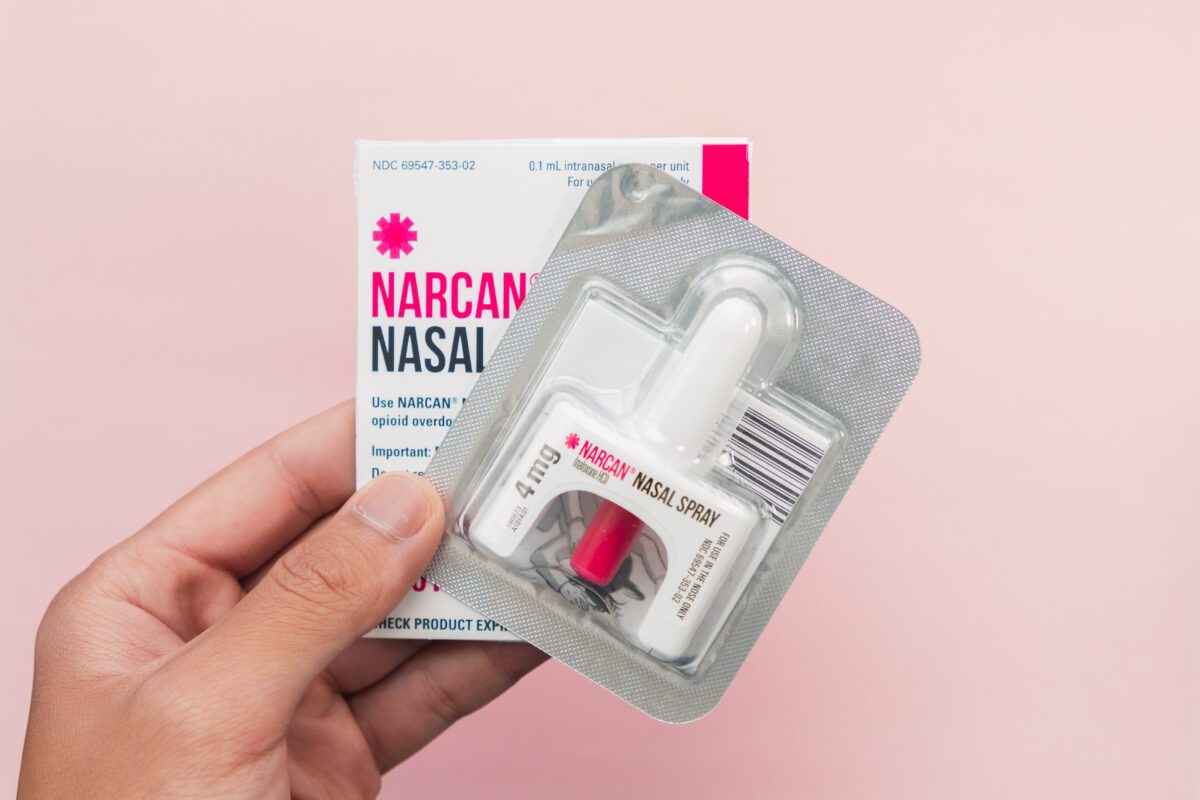According to the latest data from the Centers for Disease Control and Prevention (CDC), opioid overdoses claimed the lives of nearly 107,000 individuals in 2021. That’s a 114% increase from 2019. Much of that is from fentanyl.
An overdose can be fatal, but certain medications can help reverse its effects if given promptly. Naloxone is one of them. If you or someone you know is struggling with a drug addiction, this FDA-approved medication can be life-saving.
Today, we’re taking a closer look at what Naloxone entails, how it works, and where you can get it.
What Is Naloxone?
Naloxone belongs to a category of medications called opioid antagonists. Put simply, this means that as soon as someone takes Naloxone, it binds to the opioid receptors located throughout their body. This binding action helps reverse and block the effects of other opioids present in the individual’s system, such as:
- Fentanyl
- Heroin
- Oxycodone
- Codeine
- Hydrocodone
- Morphine
If administered within a given timeframe, Naloxone can help restore normal respiratory function in someone whose breathing has slowed or stopped due to an opioid overdose. However, it will not have any effect on someone who has not ingested opioids.
It’s important to note that while Naloxone can be a lifesaver for someone in the throes of an overdose, it is not intended as a long-term treatment for an opioid use disorder. In addition, it is not effective in reversing overdoses associated with other, non-opioid drugs including cocaine and methamphetamine.
How Is It Administered?
There are two main ways someone can administer Naloxone. These include:
- Injecting the medication into a muscle, under the skin, or into a vein
- Spraying it into the nostrils
While conventional forms of Naloxone injections require drawing up a dose from a vial, pre-filled, single-dose syringes are also available. Although the nasal spray version is the most common, easier method. No matter which form of the medication you use, it’s important to understand how to safely and correctly administer it. The American Medical Association (AMA) has created this comprehensive video to illustrate the proper technique, but in-person demonstrations are best. Your local pharmacist or healthcare provider can show you how to use each form of the medication.
Remember that Naloxone should only be given to someone who is either showing blatant signs of an opioid overdose or behaving in a way that suggests an overdose may be occurring. Once you’ve given someone this medication, stay with them and observe them closely until medical support arrives.
How Quickly Does It Work?
Naloxone is a very fast-acting drug, helping to overturn the effects of an overdose as soon as it’s administered. However, it’s meant to be a temporary treatment, so those reversal effects only last about 30 to 90 minutes. Most opioids remain in the body for much longer than that, which is why immediate medical attention is still required.
If you believe someone is experiencing an overdose, it’s critical to call 911 and administer Naloxone as soon as possible. Some of the signs of an opioid overdose include:
- Not waking up
- Not responding to voice commands or touch
- Slowed or stopped breathing
- Blue-tinted lips or nose
- Pinpoint pupils
Without medical intervention, opioid users could return to feeling the effects of the overdose as soon as the Naloxone wears off. This is especially the case with very strong opioids, such as fentanyl. If required, medical personnel can administer subsequent doses of this medication once they arrive on the scene.
What Does Withdrawal Look Like?
Within minutes of receiving Naloxone, the overdosing individual may start to show symptoms of opioid withdrawal. This is most likely to occur if they’ve formed an addiction or physical dependence on the drug. Some of the signs you might notice include:
- Blood pressure changes
- Feelings of nervousness or irritability
- Body aches
- Dizziness or weakness
- Rapid heart rate
- Headaches
- Nausea, diarrhea, or stomach pain
- Fever
- Chills or goosebumps
- Sweating
- Tremors
- Sneezing or runny nose
Withdrawal symptoms can be uncomfortable for the addicted person and difficult to watch, but they aren’t usually life-threatening. The risks of not giving Naloxone in someone’s time of need are far worse than the side effects that this medication could induce.
Who Needs It?
If you have a loved one who’s struggling with an opioid addiction, you should have immediate access to Naloxone. It’s also helpful to ensure their family members and friends know where it is, or carry it themselves.
While you should still call 911 immediately when someone overdoses, administering Naloxone as soon as possible can help reverse any dangerous side effects that might be occurring. Increasingly, medical professionals and first responders are using it as soon as they respond to a call.
Where Do You Get It?
Most of the time, you can find Naloxone at your local pharmacy. There are also other resources to check, including:
- Online providers
- Community-based Naloxone programs
- Local health departments
- Local public health organizations
While some of these groups may offer free medication, others may charge. The price for Naloxone can vary depending on a few factors, such as:
- The form of medication you receive
- The location where you purchase it
- How you purchase it (online vs. in-person)
If your loved one enters an addiction recovery center like ours, they may receive Naloxone as part of a more comprehensive medication-assisted treatment (MAT) approach. Remember to check your medication’s expiration date and replace it as soon as it expires. It’s also best to dispose of Naloxone if it’s been exposed to temperatures below 39 degrees or above 104 degrees Fahrenheit.
Learn More About Opioid Addiction Treatment
Naloxone can be a life-saving medication for anyone who is overdosing on opioids. If you believe you may have a reason to use this medication in the future, reach out to us.
We offer addiction recovery services for youth and adults, including MAT, withdrawal management, and varying levels of care. We tailor our approach to meet each client’s needs, focusing on treatments that can encourage long-term sobriety and prevent the risk of relapse.
To learn more about our services and get help for yourself or a loved one, take a look at our programs today!


